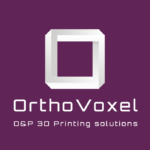The evolution of 3D printing technology has revolutionized the way we design and produce silicone prototypes. These advancements offer numerous advantages in the prototyping process. Exploring these benefits helps grasp the power and versatility offered by this innovative technology.
Speed and ease of silicone prototype production

Using 3D printing to produce silicone prototypes is faster than traditional methods. Development times are significantly reduced by eliminating the steps of making impressions and fabricating molds. Digital files are processed and directly sent to the 3D printer.
Design freedom
The design flexibility offered by 3D printing allows the creation of silicone part prototypes with complex geometries that would often be difficult, if not impossible, to achieve with other manufacturing methods: organic shapes, complex internal structures (channels, cavities, honeycomb structures, or lattices), complex assemblies, hollow or creviced geometries, etc. Here are some examples of complex geometries:

3D printing silicone while preserving material properties enables the creation of functional prototypes with high mechanical properties. However, the fluid nature of silicones limits the printing of certain structures. At COP, we’ve developed a dedicated support gel for 3D printing silicone elastomers: COPSIL 3D® ADD GEL.
This technology pushes the boundaries of additive manufacturing, allowing the creation of structures with overhangs of more than 45° or bridges exceeding 5 mm. To delve deeper into this technology, we invite you to read this article: Which support solution used for RTV-2 silicone 3D printing?
Rapid Iteration Potential for Enhancing the Final Product
3D printing provides the opportunity to undergo multiple iterations before reaching the final model. The absence of a mold streamlines the production of different versions, facilitating rapid prototyping. It can expedite the development process by identifying errors at early stages.
However, it’s crucial to have comprehensive upfront planning for the project and establish a precise framework to avoid excessive iterations. Moreover, a thorough understanding of production tools within your project scope is essential. The support we offer within our laboratory enables us to co-develop your product. We print your Proof of Concepts and prototypes using our materials and our partner Lynxter’s printer: the S300X printer.
Photo © Universal 3D Printer S300X/ Lynxter
Cost and accessibility
In cost terms, silicone 3D printing cuts expenses tied to tooling, molds, and labor costs. It enables the production of the exact quantity needed for your silicone prototype without excess material. It can require lower investments compared to traditional methods. Using a single equipment to create various shapes also reduces production times.
In essence, 3D printing for silicone prototypes represents much more than a mere alternative to traditional methods. It embodies a revolution in speed, flexibility, iteration possibilities, and cost management in the field of prototyping. If you wish to further explore silicone 3D printing for prototyping and discover the practical and essential steps in this process, we have written an article dedicated to this topic outlining the detailed steps of silicone 3D printing prototyping. This article covers various phases, from file design to post-production of silicone prototypes, providing a more comprehensive view of the process.
Discover the article: What are the stages of the prototyping process with silicone 3D printing?
With our commitment to guide you throughout the process, from conception to materialization of your ideas, at COP, we are convinced that this technology opens doors to innovative and cost-effective opportunities to bring your most ambitious projects to life.









